Love it or hate it, the push for free shipping on Etsy is here. I’ve waited a couple weeks for the dust to settle and thought I’d weigh in with my thoughts and financial concerns. So if you’re tired of hearing about this topic, I totally understand. Feel free to sit this one out my friend.
In case you’ve been out of the loop lately, Etsy has announced they’re prioritizing sellers offering free shipping on orders of $35 or more in search results to US buyers. Read all the details here.
Now as you may know, I am an accountant. So my goal here is to explore free shipping from a numbers (or at least data-based) perspective. But before I get started on that, I do want to share my personal feelings on this topic, particularly as a maker myself.
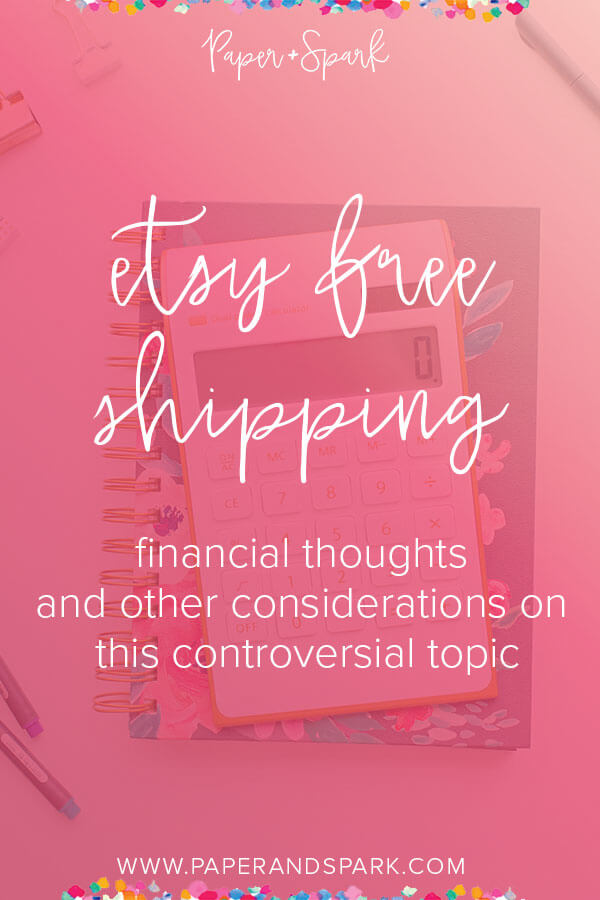
MY PERSONAL FEELINGS ON FREE SHIPPING
Point one: I do not feel good about Etsy pushing free shipping and forcing sellers’ hands here. I agree that free shipping can be a hugely beneficial marketing tactic for many sellers. But I do not feel like we should be coerced to utilize it or suffer the consequences.
Point two: I do not like the feeling that Etsy wants us to compete with big box stores. The push for free shipping feels like one more nail in the coffin of Etsy as a true artisan marketplace. The Etsy I started selling on in 2011 was the anthesis of all things big box.
Point three: I do not like that Etsy is proactively priming Etsy browsers to expect deals like free shipping. We’re already on a slippery slope with sales & discounts galore. Shoppers are likely beginning to expect 2-day shipping (a la Amazon prime). All of these things create an environment that doesn’t build up the artisan experience but degrades it. We’re giving positive reinforcement to bargain shoppers and negating our ability to create high quality, uniquely handmade products WHILE building businesses that are still sustainable and profitable.
Point four: The pressure to offer free shipping perpetuates the gross feeling that Etsy sellers need to compete on price – an attitude I detest and write about extensively here. Etsy articles are actually suggesting you consult the rest of the Etsy market to see how other Etsy sellers are pricing their goods and whether they’re choosing to offer free shipping. You don’t know that shop’s costs & business model. You don’t know whether that shop owner is able to pay themselves a living wage! It’s not SMART to compete on price with a shop that could be running itself into the ground and out of business by next month.
Point five: Pricing for PROFIT is already hard enough and this policy adds another huge kink in the chain. Having a thorough understanding of your costs (even before you consider free shipping) and then setting retail prices to cover all of them (plus profit) is already difficult, and the free shipping question just complicates that.
Now that I’ve gotten my personal feelings on the matter out of the way (thanks for listening!), I want to bring you a discussion of free shipping from a pricing & numbers standpoint, along with a few factual points to consider. So here we go.
THE ARGUMENT FOR FREE SHIPPING
…is a good one, in general. Yes, shoppers are now conditioned by Amazon and the online buying experience to want FREE shipping and no additional surprise costs at checkout. Yes, studies have shown that shoppers are more likely to spend a bit more money on their order when the seller offers free shipping. Yes, studies have shown that high shipping costs have been proven to increase cart abandonment. Yes, it’s nice that Etsy is working to make their marketplace more attractive to more buyers, which will have a beneficial trickle down effect to you.
All of these are good valid points. But as a micro business owner (likely as a one-woman-shop here!), the logistical & financial challenge of free shipping is a hard pill to swallow. We ain’t Amazon, y’all!
if you’re considering free shipping…
You do not HAVE to offer free shipping. The rest of this article is written for those of you who are considering it or who have decided to opt IN. My main concern for you is that you don’t run your business into the ground. This article is not brief. I have a lot of thoughts. If you’d rather watch a video that pretty much covers the same content that I write below, I have a video for you embedded right here. Or, you can keep reading!
NOW IS THE TIME TO MAKE SURE YOUR PRICES ARE ROCK SOLID.
Before we go any further here, you must know if your CURRENT pricing strategy is profitable and sustainable. I don’t even want you to throw shipping into your considerations just yet. Chances are a good lot of you are already underpriced, shipping aside. And that needs to be addressed before you can begin to tackle the free shipping question. I encourage you to watch my free workshop on this topic here.
If you feel good about your current pricing strategy and know it’s been working for you up to this point (by “working for you” I mean you have been able to pay yourself a decent amount and also re-invest in your business), then you are in a place where you can begin to consider whether offering free shipping is viable or not.
Please – don’t skip this step! If you aren’t priced right to begin with, adding free shipping is just like drilling more holes in an already sinking ship!
Taking time to re-analyze your pricing strategy (definitely watch this free training about pricing mistakes or download a free pricing calculator here!) will also help with any mindset challenges or blocks you’re about to deal with as a seller.
You will need to raise your prices to incorporate free shipping. That can trigger some self-doubt or insecurities in you. Working through your actual, factual costs & really understanding your numbers allows you to feel confident knowing exactly where your prices need to be, which can help counteract that icky feeling of “pricing too high”.
FREE SHIPPING – IT’S REALLY ABOUT COMPETITION
The big draw of participating in Etsy’s push for free shipping is that offering free shipping on orders of $35 or more will allow you to rank higher in Etsy search results.
Basically, the flip side of that is that if you do NOT play the free shipping game, you can potentially DROP in Etsy search results.
The technical statement is that Etsy is reserving “the top most visible search spots on the US search page” for items that ship free OR ship free in an order of $35 or more.
So first I encourage you to ask yourself – how much do you currently depend on Etsy search results?
If you don’t know, go check out your Etsy stats. You’ll see some helpful stuff in the Traffic section.  This shop is getting the majority of its traffic from within Etsy – about 26% from Etsy search results, and about 44% from “Other Etsy Pages” which includes the Buy On Etsy App, editor’s picks, the home page, and favorites. On the flip side, this shop is driving about 27% of its own traffic, if you consider external search, “other” (which is like direct traffic) and social media traffic.
This shop is getting the majority of its traffic from within Etsy – about 26% from Etsy search results, and about 44% from “Other Etsy Pages” which includes the Buy On Etsy App, editor’s picks, the home page, and favorites. On the flip side, this shop is driving about 27% of its own traffic, if you consider external search, “other” (which is like direct traffic) and social media traffic.  If the majority of your traffic comes from within Etsy, and especially from internal Etsy searches, and if the majority of your sales come from this traffic – you are very dependent on Etsy for your sales. It’s more in your interest to play their game – meaning offering free shipping. If you fell in search results, that could have a direct negative impact on your revenue.
If the majority of your traffic comes from within Etsy, and especially from internal Etsy searches, and if the majority of your sales come from this traffic – you are very dependent on Etsy for your sales. It’s more in your interest to play their game – meaning offering free shipping. If you fell in search results, that could have a direct negative impact on your revenue.
If you drive most of your own traffic and sales (like from social media, your own website, email marketing, etc.), then where you rank in Etsy search has a lot lower of an impact on your bottom line. If you fell in search results, this *should* not greatly affect your traffic & sales.
Now that’s not to say offering free shipping still couldn’t BOOST your sales (see the argument FOR free shipping above!) – even if you’re driving your own traffic. But that’s something for you to consider on your own time.
FREE SHIPPING – CHANGING YOUR WAY OF THINKING
So how the heck do you account for shipping costs in your prices when shipping costs can vary so much? The first thing we have to do is shift our mindset when it comes to costs.
Traditionally, when I think about my pricing strategy, I consider the cost of my items and a few other key components in my formula (mentioned here). I determine of my cost of supplies, my labor, my overhead rate, and my profit markup.
What I haven’t considered in the past is my shipping cost. Why? Because that depends on the specific order details. For more on this (trying to keep this article as un-lengthy as possible!) check out my video above where I dive in further.
Basically, you basically have to think of shipping costs as part of your overall pricing equation now. Everything must be lumped in together – which gives you the challenge of having to come up with one representative number or average for your shipping cost. This can be more or less difficult depending on what you sell.
YOUR AVERAGE ORDER VALUE MUST INCREASE
Let’s shift gears slightly to talk about your average order value (AOV). In the most general sense, if you offer free shipping but want to continue staying financially stable, your average order value needs to increase. You can look at your current AOV to determine where your new AOV needs to be.
Pull out your bookkeeping system (or your Etsy Seller Spreadsheet) and add together your Etsy Sales + Etsy Shipping Received for a month. That gives you your gross revenue. (Don’t use your Etsy stats or sales circle for this exercise – they often do not include shipping received in your total sales!) Divide that amount by the number of orders placed during that same month (you CAN use your Etsy stats screen to pull that number). The result is your average order value.
Now your mission – if you choose to accept free shipping – is that you increase your existing prices in such a way that your new AOV stays the same (or around the same) in the months to come.
Note that this is ASSUMING you have been happy with what you’ve been charging for shipping in the past! If you weren’t, then I’d do this same exercise but use your shipping EXPENSE instead. More on this in my video!
So how do you achieve this? What do you increase your existing pricing by – like what actual amount?
This of course is where things get tricky.
The best way to do this is to incorporate an average shipping cost per product category or product type to your retail pricing structure. Thankfully this is relatively easy to do using Etsy’s new smart pricing tool, if you feel comfortable relying on it.
FREE SHIPPING – THE EASY WAY – USING ETSY’S SMART PRICING TOOL
Etsy has rolled out a handy new tool called the Smart Pricing Tool to help you increase prices to theoretically kinda sorta cover your shipping expenses in your new retail prices.
Basically, this tool (which is automatically *activated* if you turn on the free shipping guarantee) will pop up and suggest a few different options for setting a new price for all your products $35 and over.
If you’ve been using calculated shipping in the past, the suggested options include not changing anything (please, don’t do that), increasing by your closet buyer (again, I don’t like this one), increasing by your average buyer distance, or increasing by the farthest distance. If possible, I suggest one of the latter two to more fully cover your expected shipping costs. The actual amounts that Etsy suggests will be personalized to you based on past orders.
If you’ve been using fixed shipping in the past, the Smart Pricing Tool will simply suggest you increase your price by that item’s shipping profile preset amount. I encourage you to take some time to revisit if the fixed shipping amounts you have been using in your shipping profiles still make sense.
Now for the most part, the suggestions from the Smart Pricing Tool really only make sense for shops with relatively homogeneous, and likely also lightweight, items. For my jewelry shop, where I paid about $2-$5 to ship via first class mail, this free shipping pricing strategy could work and be fine.
If you decide to increase your numbers by whatever Etsy’s Smart Pricing Tool suggests, I encourage you to analyze the suggestions on a product-by-product basis and tweak as necessary. If you have an Inventory Cost & Pricing spreadsheet from Paper + Spark (to help you with setting profitable price points) or if you’re using any other sort of pricing equation, work backwards from your new suggested retail price and make sure it covers costs, overhead, your time, your profit, AND now your average/farthest shipping.
FREE SHIPPING – THE HARD WAY – CRUNCHING THE NUMBERS YOURSELF
When you begin listing NEW products, you will have to repeat this process, but on your own. Determine the median distance from your location and the shipping cost to ship there, or use the farthest distance’s cost, and incorporate that into your retail price.
There are lots of scenarios where this can get real complicated, real fast. Although the Etsy Smart Pricing Tool is a very nice tool, I suggest you do a little number crunching yourself before automatically switching over to its suggestions. Remember – you MUST ensure you are making a profit and building something sustainable here!
Here are scenarios where relying on averages or using the farthest distance can be tricky:
—> If you sell mostly low priced items where people may or may not buy multiples (like supplies)
—> If you sell heavy items where shipping prices can vary drastically depending on where your customer is located
—> If you have a healthy mix of domestic and international buyers
—> If your shop has a bunch of different items that vary drastically by weight and/or retail price
If any of these scenarios apply to you, then you really need to take time to ponder all the factors and determine if free shipping makes sense for you. If you want to try out free shipping, you will have to rely on averages and take a big leap of faith.
You also must really, really, closely watch where your actual expenses vs. your total revenue land over time. I am not sure Etsy’s Smart Pricing Tool will recalculate or re-adjust it’s suggestions for you over time (doubtful), so making sure you aren’t losing money on a business-wide scale is up to you.
Here’s a great example I stole straight from the Etsy forum’s Q&A on this topic:

I love how in that last paragraph Etsy is basically saying – we don’t care if it feels icky to increase your prices by nearly x2. THE PEOPLE WANT FREE SHIPPING ANYWAY!
In this case, I would say if you feel STRONGLY compelled to take advantage of free shipping, you use the “median” option ($41). You will lose some if you ship to California, you will make some extra if you ship to Florida. The thought is that you’re doing this on a bigger scale throughout your shop, so you’re making some/losing some on a shop-wide scale, and hopefully coming out JUST RIGHT over all.
But that’s a big gamble. It will take constant monitoring to make sure your new prices don’t need adjusting. Not to mention the fact you should closely monitor overall sales to make sure your newly increased prices aren’t turning off buyers, even with free shipping.
If you’re not willing to make that gamble – you don’t have to!
This process only works with constant monitoring. You’re relying on the sales price (that includes your average shipping cost) covering your actual shipping costs over time. You’ll have some sales where you lose on shipping, and some where you gain. The goal is that it evens out OR you come out ahead over time. But you will only know this if you’re consistently evaluating your numbers!
THE MORAL IMPLICATIONS OF FREE SHIPPING THAT ISN’T REALLY FREE
This is totally tangential to my discussion thus far, and I know I said I would stick to the facts here, so make sure you check out my video above if you want to hear my thoughts on this topic.
A FEW MORE ISSUES TO CONSIDER
RETURNS
For financial reasons, I strongly encourage you to change your return policies in your shop to include a restocking fee of some sort if you offer free shipping. You paid for shipping that item. You’re not going to get that money back from the post office.
INTERNATIONAL BUYERS
To make things MORE complicated, if you decide to offer free shipping (for US buyers) and thus increase your prices accordingly, you’ll be charging your international buyers this increased price AND still charge them for shipping. If you have a decent amount of international buyers, I suggest you then DECREASE your shipping charges for international customers (since they’re automatically going to have to pay that increased price but NOT getting the benefit of free shipping).
CONSIDERATIONS FOR NOT PANICKING – THIS ISN’T GOING TO WORK FOR EVERYONE
Free shipping is NOT financially feasible or sustainable for some shops. Playing the averages game is not going to work for a lot of us.
If you don’t want to figure that out that’s OK. You do not HAVE to participate if you can’t make it work for you, if it doesn’t make sense, if you’re morally opposed to it, or if you simply don’t want to.
Remember that Etsy is pushing this right now by incorporating free shipping into the new search algorithm. The less you depend on Etsy search the less your “free shipping” decision matters.
Maybe THIS is the push you need to take more control of your own traffic and customer-finding destiny. Self-driven marketing is now more important than ever. Figuring out your social media strategy, creating an email list, building your own loyal tribe of repeat customers, or maybe even graduating to an off-Etsy platform are big tasks that may need to move higher up on your to-do list.
On the flip side of that coin – offering free shipping is just ONE link in the Etsy search ranking chain. There are many OTHER links in that chain you can focus on, like tags, titles, and keywords. Not to mention creating professional, polished listings with clear photos and copy. So what if you have free shipping but bleh photos and lots of types on your listing? Do you need to focus on any of those other aspects that improve your Etsy search ranking?
PERIODIC REVIEW IS THE KEY TO SUCCESS
Let me close with the ONE most important thing for those of you that choose to offer free shipping.
Turning on free shipping and figuring out your new prices isn’t even really the hard part here. The hard part is that this new pricing structure – which depends HEAVILY on a “guess” number for your shipping expense – will take consistent monitoring to make sure your business is profitable and sustainable on an overall level.
If you decide to institute free shipping in your shop, it is more important than EVER that you consistently review your numbers and your bookkeeping data. Free shipping makes it just a bit harder to know for sure if you’re truly making a profit on each and every order. It separates the expense from the associated revenue by an additional step.
By relying on averages, you’re going to make money on shipping sometimes and lose money on shipping at other times. The important thing is that overall, you’re coming out ahead (or at least breaking even). You’ll only know if that’s working out if you’re checking! Don’t just cross your fingers and hope for the best.
I encourage you to use a tool like the Etsy Seller Spreadsheet. When you update your books each month, you’ll easily see your total Etsy sales minus your shipping expenses (and all other expenses) at a glance. Keeping an eye on the net result of these numbers, along with your overall business profit margin, will alert you of any adjustments you need to make to your pricing structure. There’s nothing worse than offering shipping for a year and not realizing you’re losing tons of money on shipping expenses because you aren’t priced properly.
MOVING FORWARD
So there you go, friends – my free shipping manifesto. Keep it in perspective and choose to participate or not. Stay on top of your numbers so you can know with confidence where to set your prices and analyze whether it’s working for you or not. And most importantly, keep breathing!
Handmade pricing is a huge topic, and you’ll find several posts about it here. This is a tricky but important concept that every serious business owner should take the time to research and understand. I’ve also created a free simple + flexible little pricing formula worksheet to help you determine profitable prices for your handmade goods.

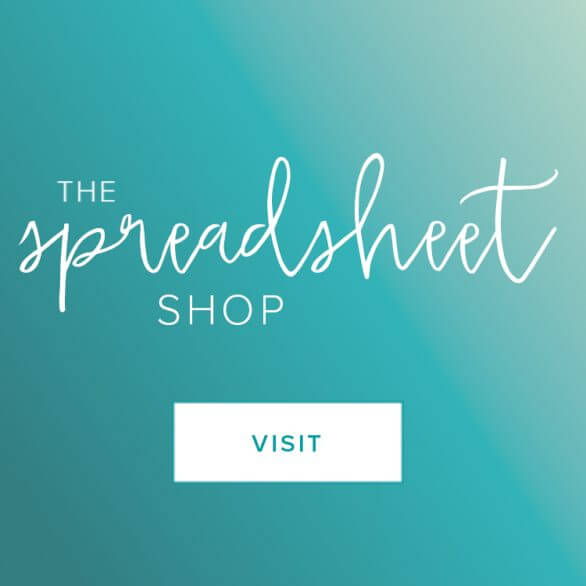
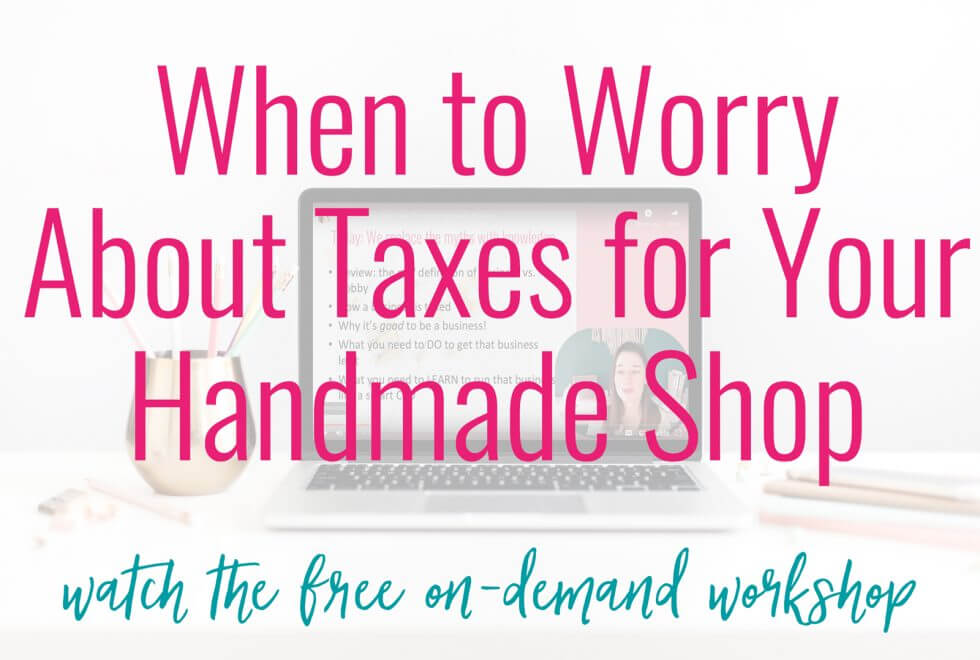

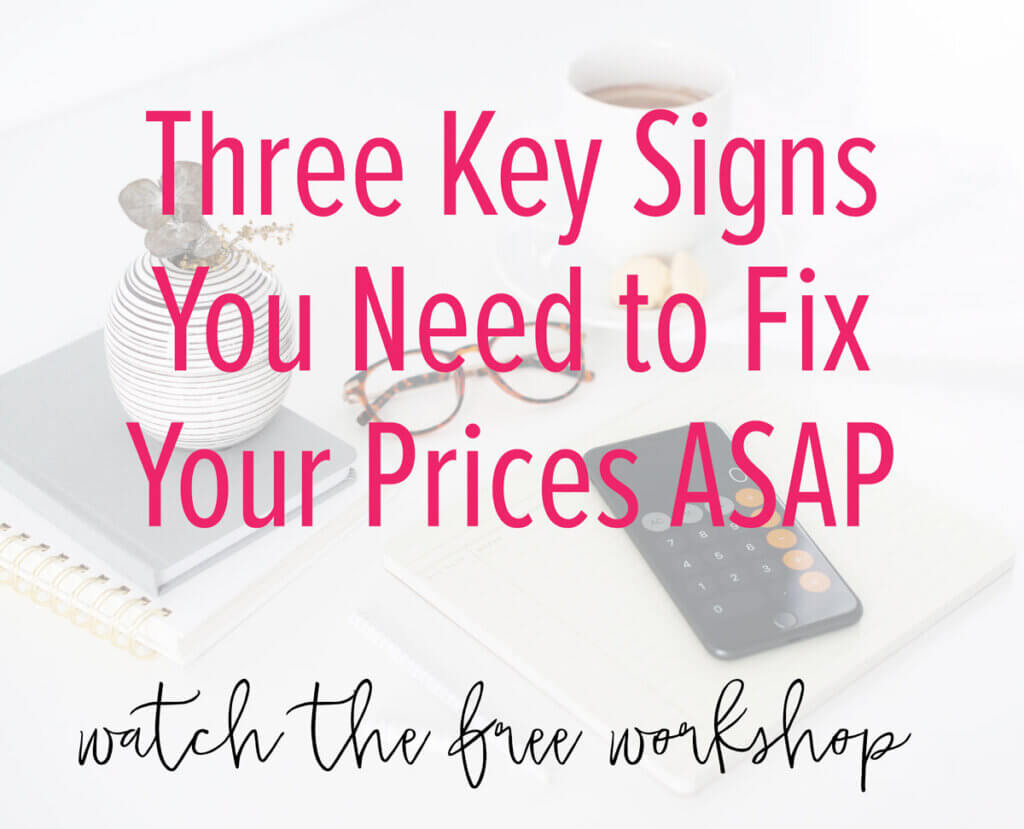

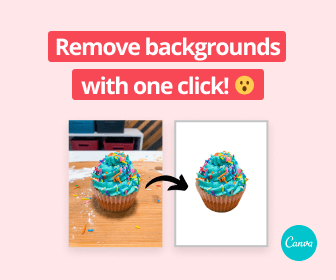




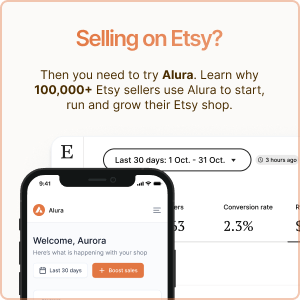

One of my concerns with built -in shipping concerns sales. When you are discounting the item AND the shipping, it will be really easy to end up giving away all profits. I know customers like a “bargain”, but unfortunately this makes it really hard to build in enough cushion to cover both.
Thank you for sharing such a vast amount of info that provokes thought. Yours efforts are appreciated. I’ve been thinking if starting a shop. There is soooo much to learn. This is yet another piece of the puzzle. I do feel these companies are getting to big & once that takes place they can regulate & dictate however they chose regardless of how it impacts the lil guy/gal
Free handmade pricing calculator, just above this comment box – it’s not letting me download it.
Also, does this have to do this POD pricing and profits?
I just fixed it – thanks for letting me know!
So I do offer free shipping, Should I go into each space in the spreadsheet and add in what I paid for shipping on each space that says zero?
Hi Michelle, no – the spreadsheet has imported in what you charge your customers for shipping (which is zero, in your case). But you should enter your actual shipping costs on your yellow postage tab, per the spreadsheet instructions.